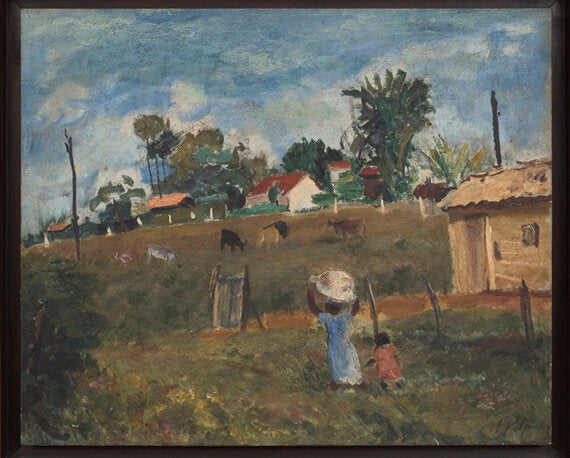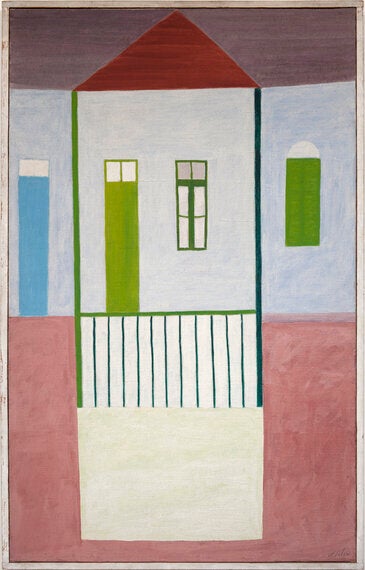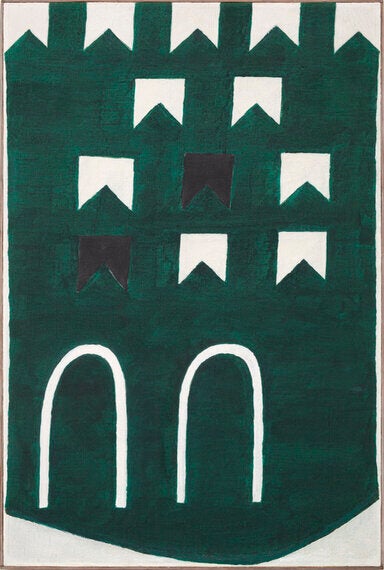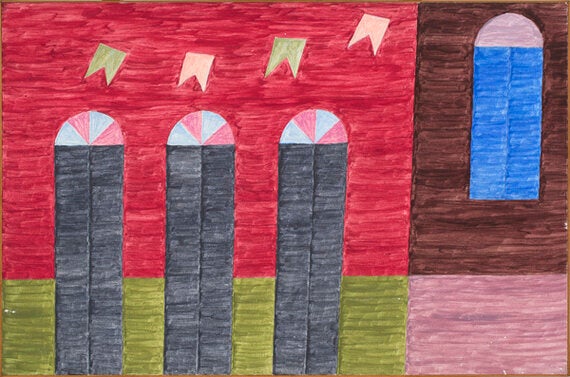Alfredo Volpi (1896-1988) has earned a reputation as one of the most influential figures in 20th century Brazilian art. His work fetches seven-figure sums and has featured in numerous retrospectives and books.
Surprisingly, although his work has been shown in the UK, including at the Royal Academy, this is his first solo exhibition here. In the intimate atmosphere of the Cecilia Brunson Projects gallery in London, we can see clearly how he was influenced by radical changes in modern art during the 1950s and how, in turn, he became a reference for other Brazilian artists from the 1960s onwards.
Volpi was from a humble background and began working life as a painter and decorator. He was fascinated by the decorative doors and gates in the streets of Sao Paolo and took up working with an easel being entirely self-taught.
Some critics of the time, most notably the Marxist Mario Pedrosa, lauded his lack of art training and education, depicting him as some kind of noble savage whose work was entirely intuitive.

Certainly he was outside the confines of polite artistic society. Yet, as the rural scene from 1937 above shows, (hardly any of Volpi's works are titled or dated) he was aware of the visual language of impressionism, post-impressionism and other later movements of the 20th century.
He'd formed a relationship with a group of painters known as the Grupo Santa Helena, all from similarly modest backgrounds, that included such as Mario Zanini, Manuel Martins and Humberto Rosa. These people regularly discussed current artistic trends.

As the highly stylised and colourful house facade above shows, by the late 1950s he had embraced modernism. A roof becomes a triangle, the windows elongated and the whole painting takes on a geometric form.
There's a sense, however, that he was looked down upon by modernists as someone from a lower social class. Not only that, but he also had a common-law wife who was black which played to popular prejudice. He was labelled by some critics as a "naif", his paintings being childlike in their simplicity. The curator of this exhibition, Michael Asbury, dispels this notion.
"It's not naive at all. It's a conscious simplicity that he's searching for. It's quite the opposite. You could think of artists such as Paul Klee, for example, who tried to emulate the drawing of a child. So in that sense he was very modernist."
The picture is painted in tempera, an ancient use of egg yolk mixed with pigments and water. Volpi got the idea from a trip to Italy in 1950, his only journey to Europe, where he admired its effects on colour by Renaissance artists such as d'Arezzo and Giotto. It became his medium of choice.

Volpi began to distil his facades to their bare essence, as illustrated by the picture above from the 1960s. He was championed by the concretists - those who drew abstraction from anything that didn't derive from nature. Volpi, however, never regarded himself as part of this or any other movement.
In the picture is a recurrent motif in Volpi's oeuvre - that of the "banderinhas" - small flags or bunting. These represent a popular festivity. The facades are not from a type of ostentatious bourgeois dwelling, rather semi-rural old colonial types.
"They have this popular connotation in the same way as his flags have this popular festive connotation," says Asbury. "The themes that he focuses on have a particular significance for himself, whether conscious or not, as someone with a simple background operating and circulating in a so-called sophisticated milieu."

The 1960s and onwards saw Volpi develop his flags motif. He used them to build his style around. As the semi-abstract painting with the shutters above illustrates, his brushstrokes have become looser with thicker applications of tempera, and his colours are bolder, more assertive. Matisse was known to be a big influence.
According to Michael Asbury, "It's this ambivalence between representation and abstraction that places him between the early modernists in Brazil with their desire to represent the popular traditions, what is most Brazilian, and this very clear, concrete abstract that is international and has no desire to represent anything particular. He's in-between and why I called this exhibition "At the cross-roads of Brazilian modern art."
The exhibition runs at the Cecilia Brunson Projects, Royal Oak Yard, Bermondsey Street, London SE1 3GD until 29 July 2016.
All images are used with the permission of the gallery.